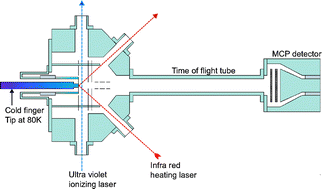Characteristics and applications of RELAX, an ultrasensitive resonance ionization mass spectrometer for xenon
Abstract
RELAX is an ultra sensitive, time of flight, resonance ionization
The lifetime against ionization of xenon atoms in the spectrometer is about 100 s. Isotope ratios for the major xenon isotopes can be determined more precisely than 1.5 ‰. The detection limit (3σ over the blank) is 950 atoms 132Xe, and is limited only by variations in the blank, which is currently about 1000 atoms of 132Xe. At peak sensitivity, sample sizes are restricted to less than ∼106 atoms. Thus to achieve precise measurements of isotope ratios it is necessary to take an average from multiple analyses. Repeat analyses of air calibration samples are reproducible to 1 ‰ for the major xenon isotopes over several weeks, allowing us to determine precise and accurate isotope ratios of large samples by averaging multiple analyses.


 Please wait while we load your content...
Please wait while we load your content...